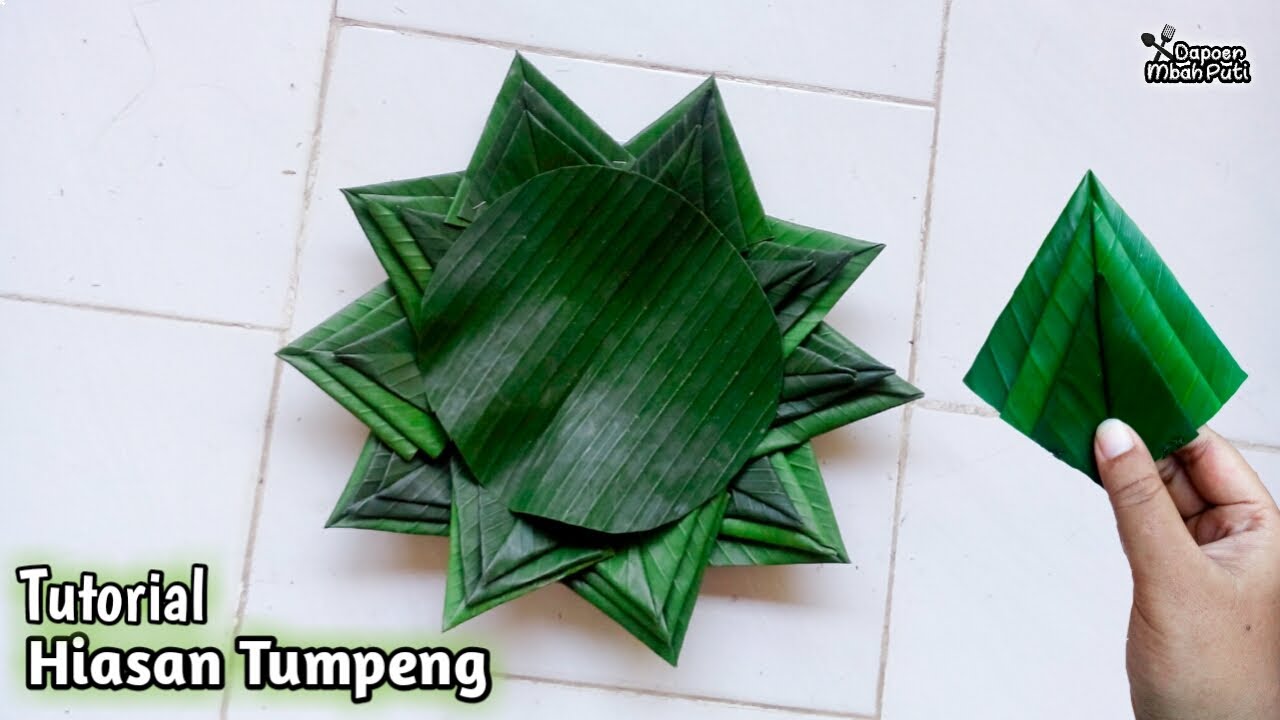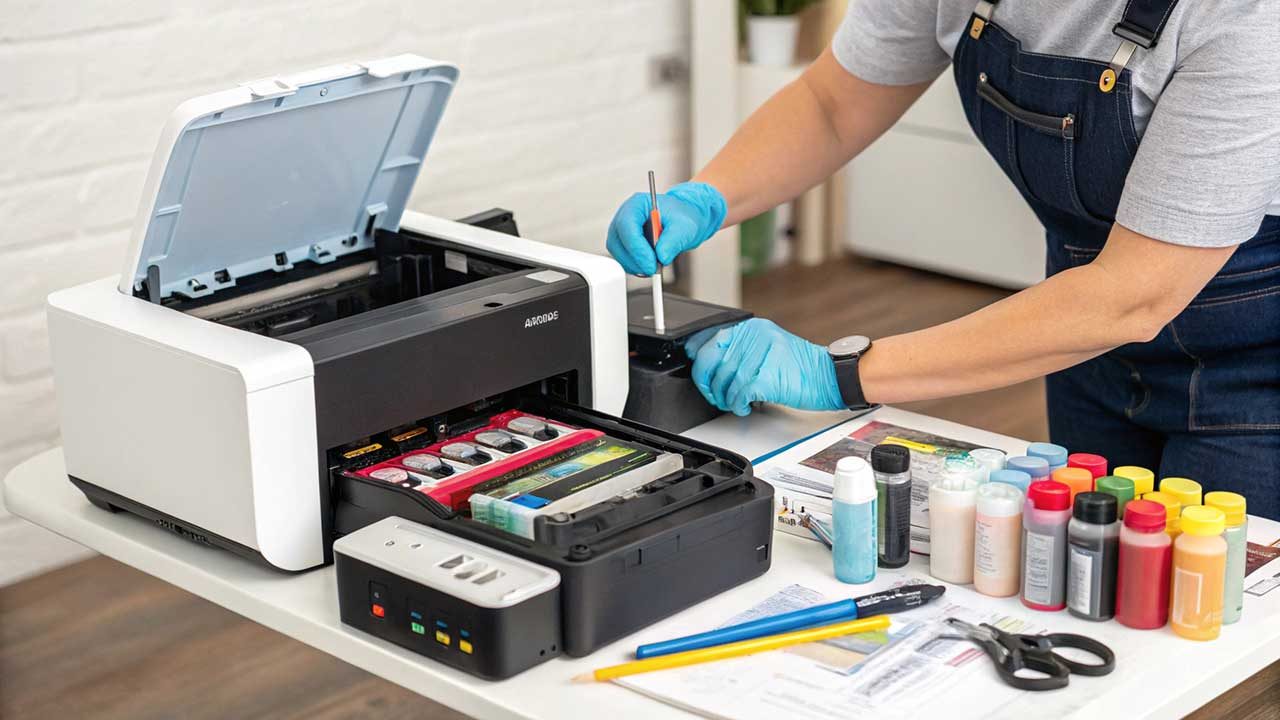Introduction
Rintiksedu.id: If you are looking for a creative way to decorate your tumpeng (a traditional Javanese cone-shaped rice dish), then making decorative ornaments from banana leaves might be just what you need. As someone who has personal experience in creating these beautiful adornments, I will guide you through the process step by step. But first, let me introduce you to the fascinating world of crafting tumpeng decorations using banana leaves.

Exploring the Art of Tumpeng Decoration
The Significance of Tumpeng in Indonesian Culture
The tumpeng holds a special place in Indonesian culture. It is often served during celebrations, ceremonies, and traditional events as a symbol of gratitude and togetherness. The decorations on the tumpeng not only enhance its appearance but also carry deeper meanings. Let’s delve into the art of tumpeng decoration and learn how to create beautiful adornments using banana leaves.
Choosing the Right Banana Leaves
When it comes to creating tumpeng decorations, selecting the right banana leaves is crucial. The leaves should be fresh, vibrant, and free from any damage or insect bites. Additionally, consider the size and shape of the leaves as they will determine the final design of your ornament.
Preparing the Banana Leaves
Before you can start crafting the decorations, the banana leaves need to be properly prepared. This involves cleaning, trimming, and softening the leaves to make them easier to work with. Follow these simple steps to prepare your banana leaves:
- Gently wash the leaves with water to remove any dirt or impurities.
- Trim off the edges of the leaves to create a clean rectangular shape.
- Steam the leaves for a few minutes to soften them, making them more pliable for shaping.
Tumpeng Decoration Ideas
Creating Leaf Rosettes
Leaf rosettes are an elegant and versatile decoration that can be used to adorn the top of the tumpeng or as decorative accents on the side. To create leaf rosettes, follow these steps:
- Select a large banana leaf and cut it into square-shaped pieces.
- Hold each piece of banana leaf diagonally and carefully fold it inwards, creating a cone shape.
- Continue rolling the leaf cone tightly until you reach the end.
- Secure the rolled leaf with a small toothpick or a thread.
- Repeat these steps to create multiple leaf rosettes of different sizes.
Weaving Leaf Patterns
Another technique to create beautiful tumpeng decorations is by weaving banana leaves to form intricate patterns and designs. Here’s how you can weave leaf patterns:
- Cut the banana leaves into long, thin strips.
- Start by crossing two strips diagonally and interlacing them.
- Continue adding more strips to create the desired pattern, ensuring they are tightly woven together.
- Once you have finished weaving, trim the excess leaves and secure the ends.
Adding Flower Embellishments
Flowers can add a delicate touch to your tumpeng decorations. While fresh flowers are commonly used, crafting flower embellishments from banana leaves is a unique and sustainable alternative. Here’s how you can make your own:
- Cut small petal shapes from the banana leaves.
- Overlap the petals and secure them in the center with a toothpick or a piece of string.
- Make multiple petals and arrange them in a circular pattern to create a flower shape.
- Attach the flower embellishments to your tumpeng using toothpicks or small skewers.
Frequently Asked Questions
1. Can I reuse the banana leaves for tumpeng decorations?
Yes, you can reuse banana leaves for tumpeng decorations as long as they are still fresh and in good condition. Simply wash and steam them again before starting your next craft.
2. Are there any other materials commonly used for tumpeng decorations?
While banana leaves are a popular choice for tumpeng decorations, other materials such as colored paper, ribbons, and fabric are also commonly used to create unique and vibrant ornaments.
3. How long do the banana leaf decorations last?
The durability of banana leaf decorations depends on various factors such as the environment, handling, and maintenance. Generally, they can last for several days to a week if kept in a cool and dry place.
4. Can I decorate tumpeng for any occasion?
Absolutely! Tumpeng decorations can be customized according to the theme or occasion. From traditional ceremonies to birthdays and weddings, there is no limit to when and how you can decorate a tumpeng.
5. Are there any superstitions or beliefs associated with tumpeng decorations?
Yes, in Javanese culture, it is believed that the decorations on the tumpeng represent blessings and good fortune. Thus, creating elaborate and beautiful ornaments is seen as a way to attract positive energy and prosperity.
6. Can children participate in making tumpeng decorations?
Absolutely! Crafting tumpeng decorations can be a fun and engaging activity for children. It allows them to explore their creativity while learning about traditional Indonesian culture.
7. Can I use tumpeng decorations for other dishes besides tumpeng?
While tumpeng decorations are commonly associated with the traditional rice dish, there is no rule against using them for other dishes. Feel free to experiment and embellish your favorite culinary creations with these beautiful ornaments.
8. Are there any cultural references related to tumpeng decorations?
Yes, tumpeng decorations hold cultural significance beyond their aesthetic appeal. They are rooted in Indonesian traditions, symbolizing gratitude, harmony, and the spirit of togetherness during festive occasions and special events.
9. Can I sell my handmade tumpeng decorations?
Yes, if you have a knack for crafting tumpeng decorations, you can turn your skills into a small business. They make great decorative items for various events and celebrations, allowing you to showcase your creativity and share a piece of Indonesian culture.
10. Are there any alternative methods to create tumpeng decorations without using banana leaves?
While banana leaves are commonly used for tumpeng decorations, you can explore other natural materials such as pandan leaves or even experiment with eco-friendly synthetic materials that mimic the look and feel of traditional banana leaves.
Conclusion
In conclusion, mastering the art of tumpeng decoration using banana leaves opens up a world of creativity and cultural appreciation. From leaf rosettes to woven patterns and flower embellishments, there are countless ways to adorn your tumpeng. So, the next time you prepare a tumpeng for a special occasion, consider adding these unique and captivating decorations to elevate the visual experience and pay homage to the rich traditions of Indonesia.







